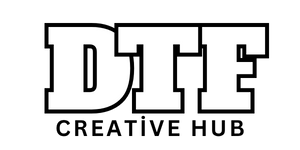DTF transfers for t-shirts have transformed how designers and crafters add vibrant graphics to clothing. Celebrated for color fidelity and a soft hand feel, this direct-to-film approach opens new creative and production possibilities. To maximize results, learn how to apply DTF transfers with a reliable heat press. This guide helps you select materials and follow a simple process that can yield durable results that endure washes. Whether you’re decorating apparel for a local shop or a personal project, the method can scale your workflow.
Viewed through the lens of modern fabric decoration, this film-to-fabric technique—often called a direct-to-film method—lets designers place full-color images on apparel with minimal setup. Instead of traditional screen processes, you print onto a transfer film, apply an adhesive powder, cure it, and then transfer the design to fabric with heat. The result is a vivid, flexible print that can feel like a dyed design while remaining comfortable during wear. For retailers and makers, DTF printing for clothing offers scalable runs, lower start-up costs, and the ability to reproduce intricate artwork with consistent color and detail. As you plan projects, consider how the fabric type, heat press settings, and post-care requirements influence adhesion and wash longevity.
DTF transfers for t-shirts: mastering materials, application steps, and durable outcomes
DTF transfers for t-shirts are a modern solution for designers seeking vibrant graphics with a soft hand feel and long wear. When paired with quality DTF transfer paper and a reliable ink system, you can reproduce gradients and fine details with minimal cracking or fading. This approach suits a range of fabrics, from 100% cotton to blends with polyester, making it ideal for on-demand runs and small-batch production. In practice, choosing the right DTF transfer film and adhesive powder is just as important as the image itself, since film quality influences edge sharpness and durability under wash cycles.
To achieve crisp durable designs, understanding how to apply DTF transfers is essential. The process typically includes printing on a film with DTF inks, applying adhesive powder, curing, and pressing onto fabric with controlled heat and pressure. Variables like transfer paper type, plate temperature (roughly 160–170°C), dwell time, and even pressure determine adhesion strength and gloss uniformity. Before a full run, run tests on similar garment materials, check for color vibrancy, and verify that the design remains flexible after ironing and washing.
DTF printing for clothing: selecting transfer paper, care, and ensuring durable, vivid apparel graphics
DTF printing for clothing offers a practical path for small runs and full-color designs, bridging traditional methods and digital textiles. Selecting the right DTF transfer paper and compatible ink system helps ensure reliable adhesion on diverse fabrics while maintaining brightness and edge detail. For apparel lines, aligning your workflow with consistent color management and using control samples helps sustain quality across SKUs and batches; this is where DTF transfers for apparel really shine.
Careful attention to post-press finishing and care tips is essential to keep crisp durable designs intact. Store, wash, and dry items per guidelines to minimize yellowing or cracking. Emphasize how to apply DTF transfers correctly and include notes about testing different fabric blends and surfaces; highlight terms such as DTF transfers for apparel, DTF transfer paper, and DTF printing for clothing to reinforce relevance of LSIs. Additionally, practical tips on heat press calibration, fabric prep, and post-press cooling can improve long-term durability.
Frequently Asked Questions
How do you apply DTF transfers for t-shirts to achieve crisp, durable designs?
To apply DTF transfers for t-shirts and achieve crisp, durable designs: prepare a clean, pre-pressed garment; place the transfer face down; cover with a silicone or Teflon sheet; press at about 160–170°C (320–338°F) for 12–15 seconds with even, medium to firm pressure; remove the transfer while warm (hot peel) or after cooling if required by the film; perform a brief post-press to ensure full bonding; let the print cure for ~24 hours before washing; follow care tips (wash cold, inside-out). Use high-quality DTF transfer paper/film and adhesive powder to maximize color fidelity and durability, and test settings on your fabric blends before production.
What should I consider when selecting materials for DTF printing for clothing, including DTF transfer paper, and DTF transfers for apparel?
Choose DTF transfer paper/film that is compatible with your printer/inks and resists tearing and whitening at heat. Ensure the adhesive powder hydrates evenly and melts smoothly during curing. Pair with a reliable heat press capable of 160–170°C and even pressure, and test a few prints on your fabric blends to dial in temperature, dwell time, and pressure. Store powders in a cool, dry place to prevent clumping. For care, wash inside-out in cold water, avoid chlorine bleach, and avoid ironing directly on the print to maintain crisp durable designs in DTF transfers for apparel.
| Aspect | Key Points |
|---|---|
| What are DTF transfers? | DTF transfers are designs printed on a clear film and bonded to fabric using heat and pressure. They offer vibrant color fidelity, a soft hand feel, and durability on cotton, blends, and polyester blends. |
| Why choose DTF transfers for t-shirts? | They provide rich color with fine detail, strong durability that resists cracking/fading/peeling, scalability for small runs or on-demand printing, and broad fabric compatibility (including white/light backgrounds) without the need for an underbase. |
| What you need to get started | High-quality DTF transfer sheets/films, DTF transfer paper, adhesive powder, a reliable heat press, silicone or Teflon sheet, lint-free cloth, and a well-ventilated workspace (plus a garment rack for commercial setups). |
| Choosing materials and equipment | Choose DTF transfer paper and film compatible with your printer/ink system. Look for film that resists tearing/curl/whitening; adhesive powder that hydrates evenly; a heat press that maintains stable temperature (about 160–170°C) with even pressure. Test a few prints on your fabrics to dial in temperature, dwell time, and pressure. |
| Step-by-step: applying DTF transfers to t-shirts | 1) Prepare design and cut with a small edge margin. 2) Pre-press garment for 5–8 seconds to remove moisture. 3) Position transfer face down, center precisely. 4) Cover with protective sheet, press at 160–170°C for 12–15 seconds with medium to firm pressure. 5) Peel hot or cold as directed; hot peel is common after brief cooldown. 6) Optional post-press to ensure bond. 7) Check edges for adhesion and gloss. 8) Cure the print for 24 hours before washing. |
| Common mistakes and troubleshooting | Color fade/dullness: calibrate color management and verify transfer paper compatibility; adjust temperature/dwell time. Peeling/cracking: ensure adequate pressure and proper curing. Bleeding/halo: avoid overloading moisture; clean edges and use consistent pressure. Ghosting/misalignment: use alignment marks and verify placement before pressing. |
| Care and durability | Wash inside-out in cold water with mild detergent; avoid chlorine bleach. Use gentle cycle and air-dry or low-heat drying. Do not iron directly on the transfer; use a protective sheet or iron on reverse. Store garments away from direct sunlight. |
| Advanced tips for consistent results | Maintain a standard operating procedure (SOP) for heat press settings, keep a log of fabric types tested, and note transfer brands that work best. Regularly inspect film and powder for clumping or humidity effects; store in a cool, dry place. Run control samples for ongoing color fidelity and adhesion. |
| DTF printing for clothing: broader implications and comparisons | DTF sits between screen printing and newer digital textile methods. It offers flexibility for small runs and intricate images with less need for color separations, preserves a soft, flexible hand, and provides durable results comparable to vinyl—ideal for evaluating new lines with multiple SKUs and consistent quality. |

